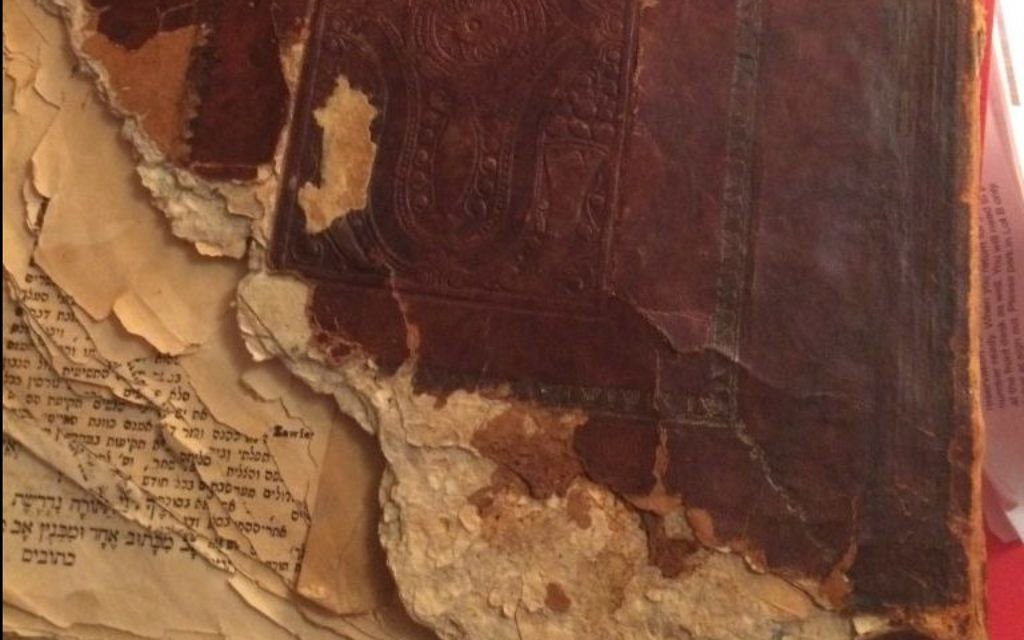Mahzor From the Ashes
The prayer book was printed in Warsaw 150 years ago, then rescued by a G.I. in 1945.
It was a quiet Sunday morning. The kids were at Sunday school, so my husband, Alan, and I indulged ourselves in a simple pastime: hunting treasures at the Lindbergh flea market.
I was always looking for a unique serving dish, and Alan hunted for old road maps (this was the infancy of eBay, and most ephemera still could be had at flea markets and house sales). We split up and wandered in our own directions.
Nothing was catching my fancy when Alan came over and suggested, with some urgency, that I follow him to a certain booth.
Get The AJT Newsletter by email and never miss our top stories Free Sign Up
A somewhat portly gentleman with gray hair and mustache was standing before an eclectic assortment of books, knives, swords, medals, ceramics, etc. He introduced himself as a veteran of World War II.
He had been in Patton’s 3rd Army and had liberated some towns in eastern Poland. In one of them he found some buried books and took one home as a souvenir.

It had spent 30 years languishing in his basement because the writing was “Jewish” and he wasn’t. With an ultimatum from his wife to clear out the basement, this book was now seeing the light as an item to be sold.
The book had a crumbling purple cover of a leatherlike material, and the lower corner was badly frayed. The pages unprotected by the cover were also crumbling, but when I opened the book, reading right to left, the title page said, “Warwasawie 1867” — printed in Warsaw in 1867.
Everything else was written in Hebrew. It was a mahzor, the prayer book used on Rosh Hashanah and Yom Kippur, the holiest days of the Jewish year.
The old soldier asked $25 for the book. I quickly made the purchase. This had to be in Jewish hands, I thought, so grateful for its rescue from the dirt of some devastated town in Poland, where 3 million Jewish citizens had been murdered.
That Rosh Hashanah I left the book at home and just took my modern mahzor to shul, but on Yom Kippur, I took my 1867 treasure with me to synagogue. I found my place for Kol Nidrei, whose hauntingly beautiful melody begins the service for Yom Kippur, which 25 hours later culminates our search for a path to improve our souls and our world.
I am not a visionary, but at this moment I experienced something that lasted no more than five seconds but has stayed fresh and clear in my mind some 30 years later. There was suddenly the presence of a series of souls, almost looking like almost amorphous bodies with suggestions of faces, some big and a few small. For those few seconds, the rest of the room faded away, and the glow of those souls filled my consciousness.
I knew I had encountered the souls of the people who had buried this book during those desperate days of the Holocaust. The bodies had been murdered, but the souls survive. They knew at that moment that their book and our faith continue.
I use this mahzor for part of every High Holiday service. I have never experienced that apparition again, but the image is still fresh and clear. Am Yisrael Chai: the people of Israel live.





comments